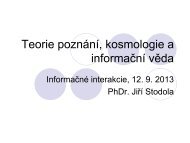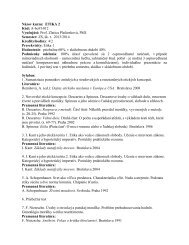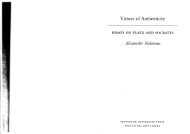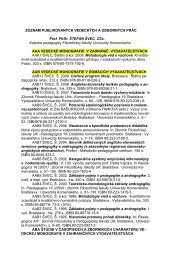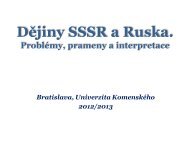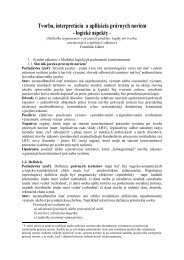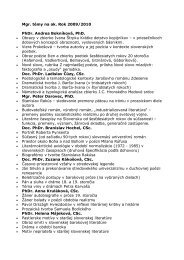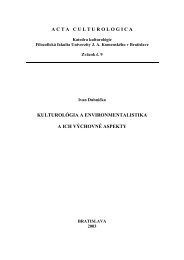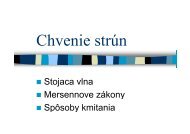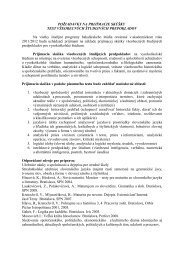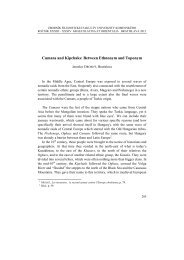You also want an ePaper? Increase the reach of your titles
YUMPU automatically turns print PDFs into web optimized ePapers that Google loves.
128 LEXICAL MEANING<br />
finger<br />
(l have ten fingers)<br />
(l broke my finger) thumb<br />
BLO( KING<br />
index pinkie<br />
finger middle ril/g<br />
finger finger little<br />
pointer finger<br />
Figure 6.6 Lexical blocking<br />
question was their thumb. In that case, you would have expected them to say l<br />
broke my thumb. The existence of thumb as a po sible contrast term for finger<br />
bJocks the interpretation of ingular finger to mean 'thurnb. ' Thus we see that the<br />
semantic relation betweenfinger <strong>and</strong> thumb affect how they are interpreted.<br />
While the aurus-style theorists have sometimes taken the extreme view that<br />
<strong>relations</strong> are all that is needed for meaning, no successful model of the lexicon<br />
has been able to rely on <strong>relations</strong> only <strong>and</strong> completely leave out any kind of<br />
definitional rneaning. Figure 6.5 show us that walking <strong>and</strong> jumping are different<br />
kinds of moving, but it does not tell us how to walk or jurnp. Similarly, if you<br />
looked at a box diagram of locomotion term for a language you didn't know, you<br />
would be able to say which were the more general terms <strong>and</strong> which contrasted,<br />
but you probably would not be able to translate the word into Engli h. Thi lack<br />
of definitional information has pro ved difficult for computational model that use<br />
thesaurus-style links among words, Mo t uch model (like WordNet <strong>and</strong> MIT)<br />
include definitions as well as <strong>relations</strong>.<br />
This raise the question: if thesaurus-style models require definition , then<br />
why not just use a dictionary-style model, which has to have definitions anyway<br />
<strong>and</strong> which can account for <strong>relations</strong> by rules (as in (22) above)? The main<br />
argument in fa vor of representing <strong>semantie</strong> <strong>relations</strong> in the lexicon is that not all<br />
sense <strong>relations</strong> are completely predictable. In this ca e, their relation need to be<br />
represented in the lexicon, the repository of unpredictable facts about language.<br />
Recall the examples of antonymy like big/little, but not large/little, which seem<br />
to indicate that words' seman tie properties are not sufficient to determine which<br />
of a range of synonyms will be its antonym. If thaťs the case <strong>and</strong> the e <strong>relations</strong><br />
are arbitrary to orne degree, then they are fact about the language that must<br />
be recorded in the lexicon. Proponents of the dictionary view argue in reply that<br />
if you look closely enough, you can find emantic difference that predict, for<br />
example, that big/little is a better antonym pair than large/little because big <strong>and</strong><br />
little are more minimally different than large <strong>and</strong> little (recalI your solution to<br />
Puzzle 6-1c). But theori t with a thesaurus point-of-view might till reply that<br />
these words have developed slight variations in meaning preci ely in order to<br />
accommodate the existing <strong>relations</strong> between them within their <strong>semantie</strong> field.<br />
6.4 Summary<br />
This chapter i<br />
hyponymy, <strong>and</strong> antonym:<br />
defining them. It al o de:<br />
of tbe e <strong>relations</strong>. Dictior<br />
of the words' emantic (<br />
accounts explicitly repres<br />
of how the men tal lexicc<br />
these extremes, since die<br />
non-seman tie propertie<br />
relation , <strong>and</strong> thesaurus-:<br />
on their own. We return t<br />
<strong>relations</strong> for verbs in § 1O<br />
antonym type in chapter '<br />
6.5 Further rea<br />
Textbooks by<br />
lots of detail <strong>and</strong> example<br />
des discussion of the type<br />
sion of history of the dicti:<br />
tie <strong>relations</strong> in other tiel<br />
cien ce. Sources on the d:<br />
but you can also explore 1<br />
6.6 Answers to<br />
6-1<br />
Your answers will vary,bu<br />
a. The car is safe~<br />
tend to mean di<br />
will come to yo<br />
won't be hit by<br />
locked up <strong>and</strong> p<br />
b. She was wearin<br />
substitute for re<br />
costurne.<br />
c. A big/large 1110\<br />
large star i phy



